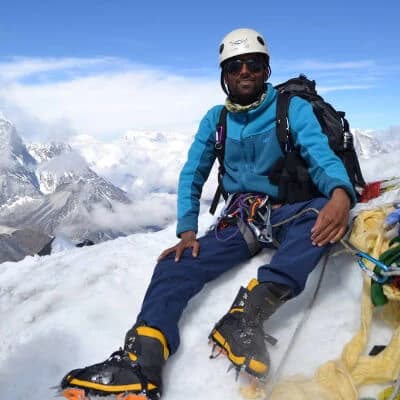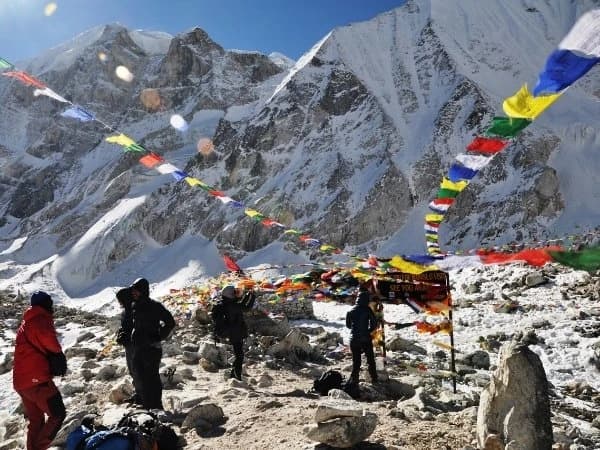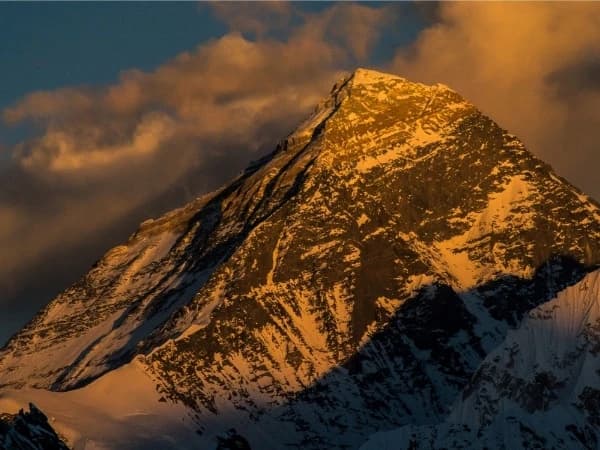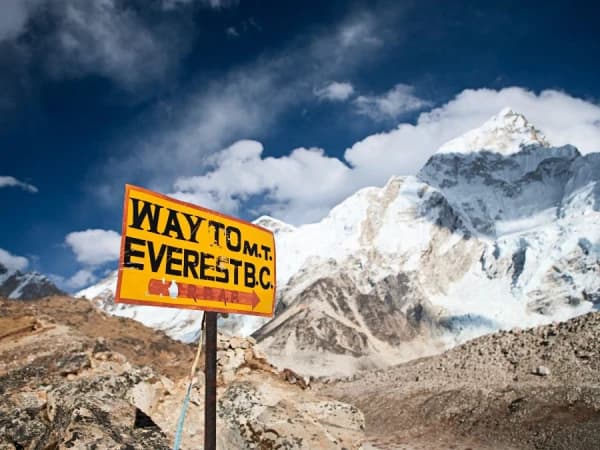Why Choose September for the Annapurna Base Camp Trek?
September is a transitional month in Nepal's trekking calendar, which offers a refreshing balance between monsoon-fed vibrancy and the promise of stable weather. To those trekkers who are looking to experience the Annapurna Base Camp Trek in September, this is the time when the trail unveils its raw, unspoiled beauty just as the heavy rain begins to fade.
You can observe the mountains and valleys at their greenest and nurtured by weeks of rainfall. Vegetation along the route is fresh, forests are denser and wildflowers begin to bloom in abundance where rivers and waterfalls trace the path to the bar camp, flowing with energy, also adding a serene soundtrack to each day's walk. This living landscape creates a powerful contrast with the stark and silent snow-capped peaks, especially as the skies begin to clear in the latter half of the month.
Another advantage of trekking in September is the relatively low number of tourists. As October marks the start of high season, September offers a quieter trail experience, which allows for more intimate interaction with locals and fewer crowds at tea houses. Villages along the route from Ghandruk to Chhomrong provide a peaceful atmosphere, giving you a chance to absorb the authentic culture of the Annapurna Region without any distractions.
Moreover, you will be enjoying fresh and clean panoramic views washed by rain. Though occasionally veiled early in the morning, it gradually becomes more dramatic and uninterrupted. The blend of lush terrain, cultural tranquility and improving visibility makes September a distinctive time to embark on the Annapurna journey.
If you are drawn to vibrant natural surroundings and value a less commercialized trekking experience, then September might be the perfect time to begin your adventure journey towards Annapurna Base Camp.
Weather and Temperature in September
It is essential to understand the climate when planning your Annapurna Base Camp Trek in September because this month sits at the tail end of Nepal’s monsoon season. This means the weather will be gradually shifting from humid and wet to cool and stable as the month progresses.
In early September, you can expect light to moderate rainfall, especially in lower altitudes, where afternoon showers are common and the trail may still be damp or muddy in places. The rainfall tends to taper off by mid-September, which gives way to clearer skies and improved trekking conditions. Visibility improves significantly in the mid part of the month, offering a glimpse of the iconic peaks like Annapurna I, Machhapuchhre (Fish tail) and Hiunchuli.
Daytime temperatures in lower elevations like Nayapul and Ghandruk typically range between 18°C to 24°C ( 64°F to 75°F). Meanwhile, higher up near base Camp, the temperature drops to 5°C to 10 °C ( 41°F to 50°F) during the day. The nights are cooler and temperatures can drop close to freezing at higher altitudes. Despite the early month humidity, the overall temperature remains mild and comfortable for trekking.
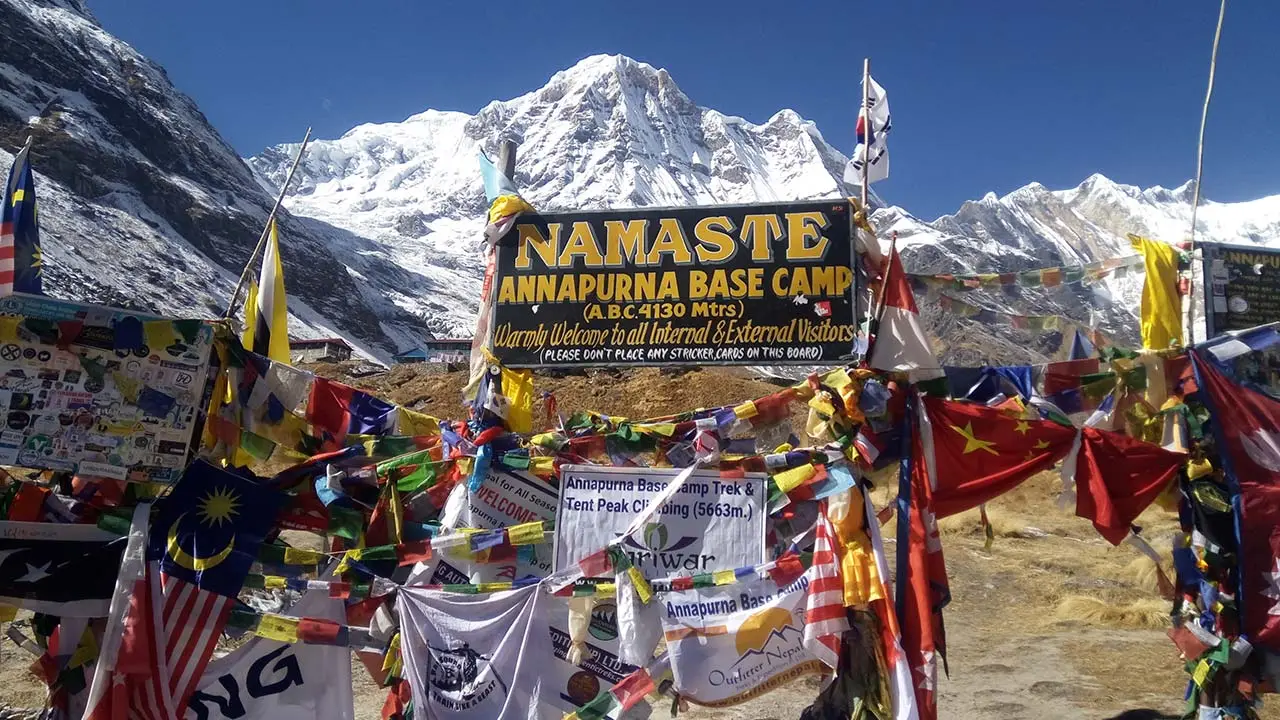
Humidity levels are still present in the first two weeks, but generally less oppressive than peak monsoon months. A breathable rain jacket and moisture-wicking clothes are essential for staying comfortable throughout the day.
In summary, September weather provides a unique blend of freshness and unpredictability, gradually shifting toward the dry and clearer condition that defines Nepal's top trekking season. For the well-prepared trekkers, the ABC Trek in September will be a rewarding trade-off.
What to Expect on the Trail?
Trekking to Annapurna Base Camp in September offers a deeply immersive experience through Nepal's most diverse terrain. The trail ascended from lush lowland to alpine landscape, where each step introduced a shift of scenery, culture and atmosphere. All of which is enhanced by the vibrancy that follows monsoon retreat.
In the lower section, such as Nayapul, Ghandruk and Chhomrong, you will be walking through the terraces of rice paddies, bamboo groves and dense forest, which feel freshly awakened. The air carries an earthy scent of damp soil, blooming plants, while waterfalls and streams rush vigorously from recent rains. Trails may be moist, but the surroundings are alive with detailed butterflies, wildflowers and birds that make your journey feel alive.
Higher up, the trail transitions into a more rugged landscape. From Deurali onward, vegetation begins to thin, giving way to glacier-fed rivers and mist-draped cliffs. As you reach near the Annapurna Base Camp then the towering peaks rise dramatically against the blue sky, especially in late September when visibility improves. Machhapuchhre Base Camp is known as a key stop before the final ascent, which offers you an incredible 360° view of the surrounding snow-covered giants.
Culturally, you can expect warm interaction with Gurung villagers and a glimpse of Himalayan rural life. Here, local tea houses remain open but less crowded while offering freshly cooked meals and a comfortable place to rest. Hospitality feels more personal during quieter times. Wildlife sightings are also possible, like langurs, Himalayan tahrs and various bird species active in the post-monsoon environment.
In short, the September trail to Annapurna Base Camp is full of contrasts with wet earth and crisp air combining quiet paths and thundering rivers, dense jungle and wild mountain vistas. Thus, it can be an unforgettable journey shared by the season's unique rhythm.
Challenges of Trekking in September
Annapurna Base Camp Trek in September offers natural beauty and tranquility. It is important to be prepared for a few seasonal challenges that come with the transitional month. One of the primary concerns early in the morning is residual trail wetness and slipperiness. As monsoon rainfall began to reduce, some sections, especially forested paths and stone staircase remain slick and muddy.
Therefore, caution is necessary while descending or navigating areas with uneven rock and particularly between Bamboo and Dovan. Another common issue during this time is the presence of leeches, especially below 2,000 meters and they thrive in the moist environment and are often encountered in forest areas after rainfall. Lightweight leech socks and salt or antiseptic sprays can be effective preventive measures.
Landslides and trail washout are also possibilities in certain sections, particularly if early September brings residual downpour and although major routes are generally maintained and safe. Still, flexibility in your itinerary is advisable for minor detours or delays.
Additionally, fog and cloud may obscure mountain views in the first half of the month. While it doesn't diminish the value of trek, it requires patience and an appreciation for subtler atmospheric moments rather than constant, clear panoramas. Unpredictable showers, though less intense than during peak monsoon, can still catch trekkers off guard and carrying waterproof gear and packing smartly is essential.
Overall, with the right precautions and awareness, all these seasonal obstacles can be managed effectively while turning what might seem like inconveniences into parts of adventure authenticity.
What to Pack for the Annapurna Base Camp Trek in September?
Packing wisely is essential for a successful Annapurna Base Camp Trek in September, especially as the trail transitions from monsoon-drenched paths to clearer and cooler conditions. A thoughtful packing list helps you to stay comfortable, dry and safe throughout the journey.
Start with weather-appropriate clothing:
Carry moisture-wicking base layers, a quick-dry trekking shirt and lightweight breathable trekking pants. A waterproof jacket or poncho is critical, especially for sudden evening showers. For warmth at higher altitudes, carry an insulating layer such as a fleece or lightweight down jacket along with thermal innerwear for chilly nights.
Your footwear should be water-resistant trekking boots with a good grip for handling slippery terrain. Avoid brand new shoes because well-worn boots are essential to prevent blisters. Leech socks or Gaiters can be helpful in particularly humid forest areas during the first half of the month.

Accessories like a wide-brim hat, UV-protective sunglasses and a buff or scarf will offer protection from the sun and wind. Trekking poles add balance on muddy or steep paths. A backpack with a rain cover helps you to keep gear dry, while dry bags or zip-lock pouches protect electronics and clothing from moisture.
Don't forget a head lamp, first aid kit, water purification tablets, reusable bottles and enough snacks or energy bars for long stretches. Charging ports may be limited, so carry a power bank for your phone and camera. Being well prepared ensures that you are ready to enjoy the shifting September conditions with confidence, no matter the trail present.
Trek Itinerary Suggestions for September
A well-planned route is a key to making the most of our Annapurna Base Camp Trek in September. The following 7–10 days itinerary is designed to balance the elevation gain, acclimatization and September-specific considerations like trail conditions and potential delays
Day 01: Drive from Pokhara to Nayapul (1,070 m), trek to Ghandruk (1,940 m )
A scientific drive followed by a steady trek through rice fields and small villages. You can expect some humidity in lower altitudes.
Day 02: Ghandruk to Chhomrong (2,170 m )
You have to climb through the rhododendron forest and reach the gateway village before the deeper Himalayan terrain begins.
Day 3: Chhomrong to Bamboo,(2,310m )
Descend and then ascend through kush forests and this section may still be damp in early September, where trekking poles are helpful.
Day 4: Bamboo to Deurali (3,200m )
As the vegetation thins, the air becomes cooler and clearer skies begin to offer occasional views of the surrounding peaks.
Day 5: Deurali to Annapurna Base Camp (4,130 m ) via Machhapuchhre Base Camp (3,700 m )
It's gonna be a long but rewarding day, culminating at the foot of Annapurna I with a possible sunset panorama if skies open up.
Day 6: ABC to Bamboo
On this day, you will retrace your steps downhill. The descent is faster, but it requires careful footing on moist trails.
Day 7 – 8: Bamboo to Jhinu Dhada (hot springs) and trek to Nayapul, drive back to Pokhara
Wind down your journey with a relaxing dip in the natural hot springs before completing the loop.
This flexible September trekking itinerary can be adjusted based on weather, pace, or rest day,s which ensures a safer and more enjoyable adventure experience.
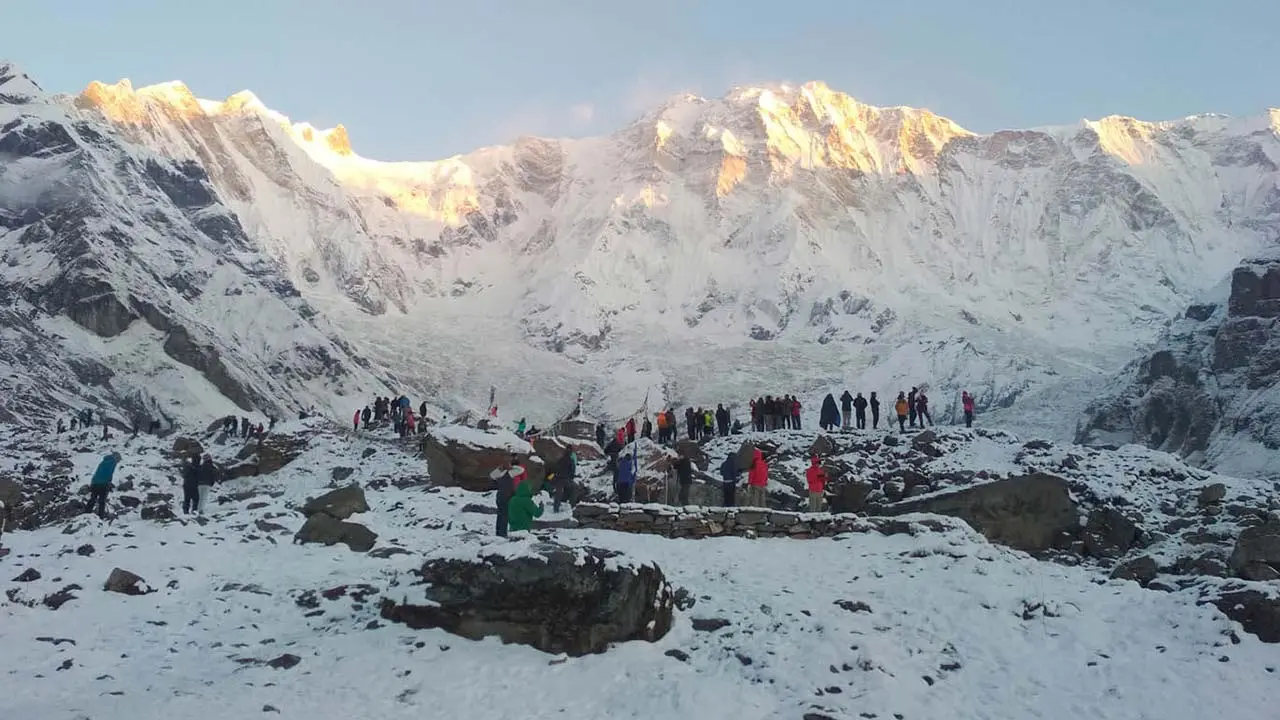
Permits and Accommodations Details
Embarking on the Annapurna Base Camp Trek in September requires an essential permit, the Annapurna Conservation Area permit (ACAP). This permit not only supports conservation efforts but also ensures your trek is registered for safety tracking, especially important during a month with fluctuating trail conditions.
This permit is easily obtainable in Kathmandu or Pokhara at the Nepal Tourism Board or through registered trekking agencies. As of recent regulations:
- ACAP is priced around NPR 3000 (Approx. US$ 30)
You should always remember to bring passport-sized photos and photocopies of your passport when applying. You should keep both permits readily accessible, as they must be shown at multiple checkpoints along the trail.
Accommodations along the route consist of traditional teahouses known for their simple yet comfortable hospitality. In September, these lodges are less crowded than in peak months, offering a quieter and more personalized stay. Rooms typically feature twin beds, clean blankets and shared bathrooms. Dining areas provide warmth and a chance to connect with fellow trekkers.
While booking is rarely necessary in September, arriving early in the afternoon ensures better room selection, particularly at higher elevations. With straightforward permit procedures and reliable teahouse infrastructure, planning your ABC Trek in September is both accessible and rewarding.
Local Tips and Safety Advice for September Trekkers
Trekking the Annapurna Base Camp route in September offers a refreshing blend of solitude and lush scenery, but the experience is best enjoyed with a bit of smart preparation and local awareness. Below are practical tips to help you stay safe and get the most from your journey.
Afternoon rain is still possible, especially during the first two weeks of September. Set off in the morning to maximize clear weather windows and complete your day hike before potential showers begin.
- Prepare for Variable Terrain
Post monsoon trails may still be slick or muddy in places, so good quality trekking boots with a strong grip are essential and trekking poles provide balance in uneven paths.
In humid and wooded areas, particularly below 2,000 meters, leeches are common. Wearing leech socks or long pants and carrying salt or insect repellent can prevent bites.
- Drink Purified Water Only
There are plenty of water taps along the way, but you should treat or filter the water before drinking. Carry purification tablets or refillable bottles with a built-in filter.
- Consider a Local Guide or Porter
Although the ABC trail is well marked, hiring a local guide enhances safety and adds cultural depth. Porters can ease the physical load, especially on longer treks in unpredictable weather.
September is the time of local festivals in Nepal, so dress modestly, ask before taking photos and support lodges and homestays run by local families whenever possible.
A combination of caution, cultural sensitivity and preparedness ensures that your Annapurna Base Camp Trek in September remains a safe and memorable Himalayan adventure.

Conclusion– Is September the Right Time for You?
Choosing to trek to Annapurna Base Camp in September is a step into the Himalayas during one of its vibrant and refreshing phases. As the monsoon fades, the landscape bursts with color, waterfalls flow at full strength and the air feels clean and rejuvenated. The trails are quieter than in October, offering a peaceful and more personal connection with nature and local communities.
While early September may bring occasional rain and leeches in the lower forest, these are manageable challenges with proper preparations. In return, trekkers enjoy greenery, cultural authenticity and progressively clearer views of the Annapurna massif. Late September, in particular, rewards travelers with spectacular mountain vistas as skies begin to open consistently.
If you are seeking a trek that combines post-monsoon freshness with fewer crowds, September is an excellent choice, which is ideal for nature lovers, photographers and adventurers who don't mind a little unpredictability in exchange for a more serene experience.
With the right gear, mindset, preparation and itinerary, the ABC Trek in September becomes more than just a hike; actually, it is a soulful journey into Nepal's heartland at a time when everything feels alive and awakening.
“ In the stillness of the mountains, we remember that every step forward is a return to ourselves”.


